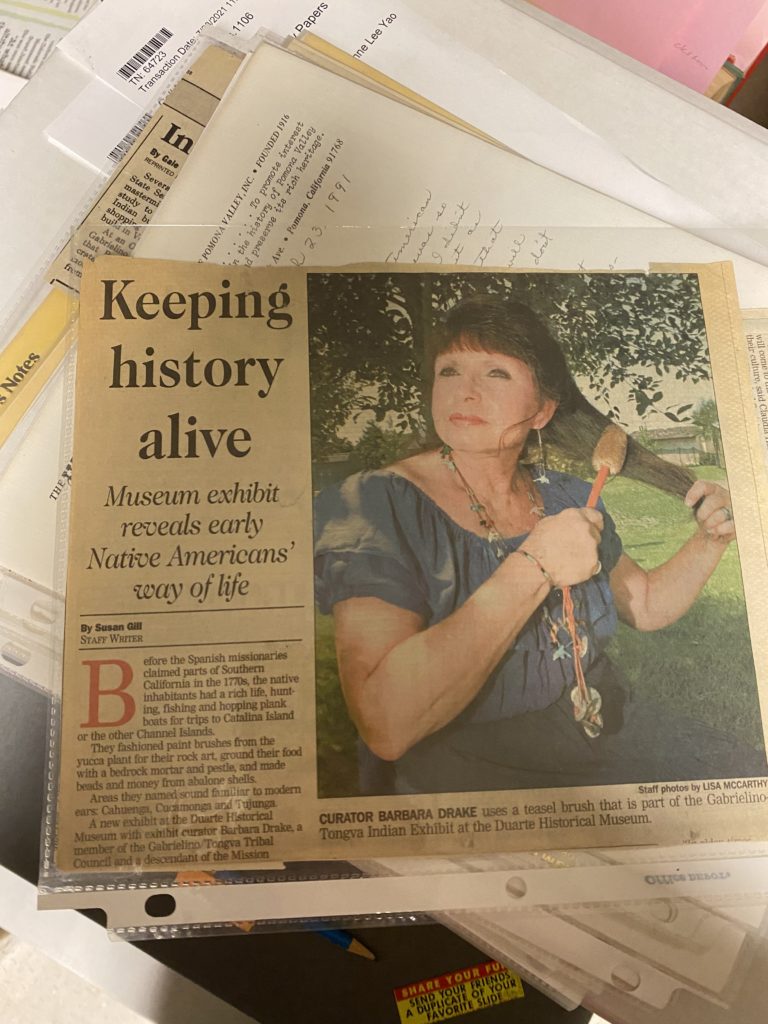I am happy to report that after weeks of poring through Barbara’s materials, the CCEPS team has finally divided all materials into subject-specific categories. These subject-specific categories correspond to parent thematic categories that will span the entire collection. As we move past this phase, I would like to share some key words I think encompass the spirit of this collection.
The first is historical. Barbara took incredible measures to preserve information relating to her Native American heritage. These span all types of mediums. She had newspaper clippings, magazine clippings, article print-outs, Indigenous curriculums, and many more elements. Similarly, Barbara did not only go through the trouble of preserving information regarding the Tongva/Gabrielino, she had an incredible wealth of knowledge regarding other Indigenous nations. She has information pertaining to the Sioux, Chumash, Navajo, Nez Perce, Cheyenne and many others. In other words, Barbara’s collection is useful for anyone that seeks to learn any facet of American history. There can be no true American history without the understanding of the Indigenous history that preceded it.
The second is community-oriented. Not only are the materials of the Drake collection an essential resource for anyone interested in history, they also retain great interest for those who are seeking to organize. What I’ve gleaned from Barbara’s collection is that she was an incredible organizer, her personal projects– ranging from the Chia Café Collective to Preserving Our Heritage– were never free from cause, purpose or diversity. Furthermore, she took the time to retain documents (flyers, brochures, itineraries, etc.) from other sources of Indigenous community engagement. These documents serve as formidable blueprints for anyone looking for ways to mobilize or embrace their own community.
The last is representative. A common thread through the whole of the Drake collection is the elevation and centrality of Indigenous voices, perspectives and character. This representation is desperately needed in today’s society, while many underserved communities are still fighting for a seat at the table, or some measure of justice. This is one of the many reasons the value of the Drake collection can not be overstated, it embodies the perspective of a beloved Tongva elder who was diligent in the pursuit of teaching and learning about her culture.
Barbara appeared to be a life long learner, it’s apropos that her collection encourages the same.
